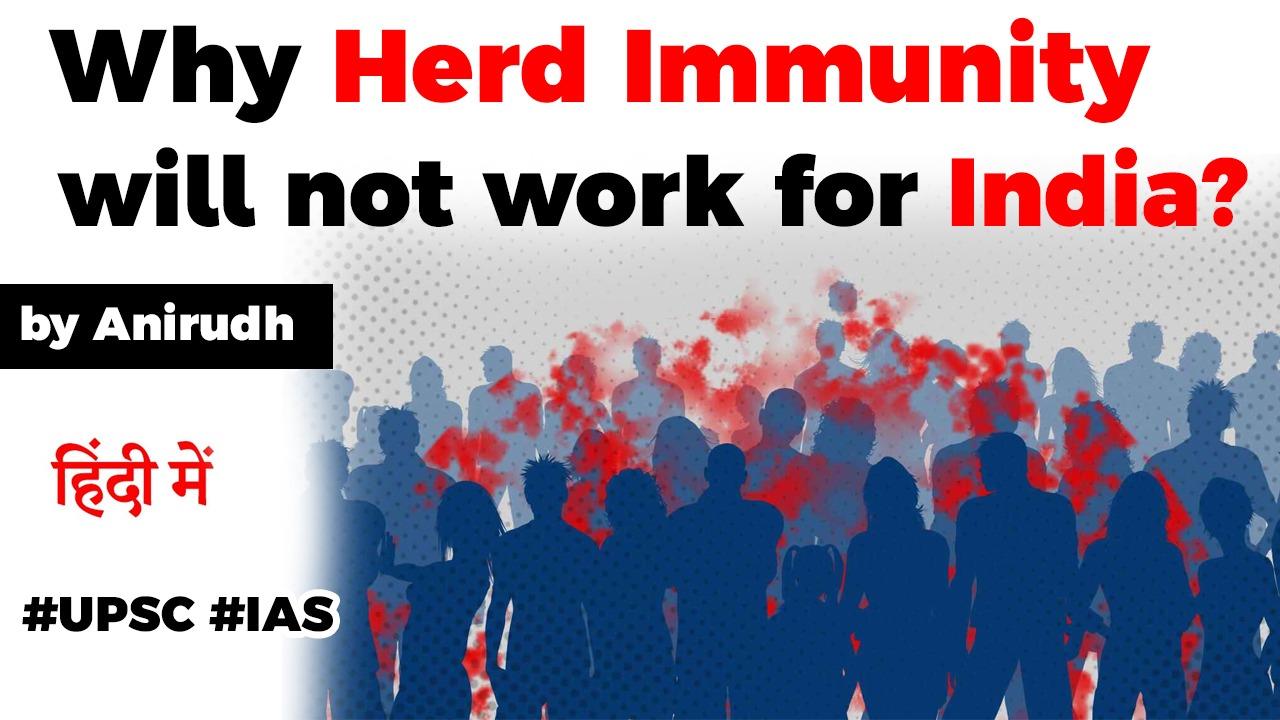Table of Contents
What is Herd Immunity?
- Herd immunity (also called herd effect, community immunity, population immunity, or social immunity) is a form of indirect protection from infectious disease that occurs when a large percentage of a population has become immune to an infection, whether through previous infections or vaccination.

What is Herd Immunity?
- This means that even people who aren’t vaccinated, are protected because people around them who are immune can act as buffers between them and an infected person.

For Example: Measles
- The more infectious a disease, the greater the population immunity needed to ensure herd immunity. For example, measles is highly contagious and one person with measles can infect up to 18 other people. This means that around 95% of people need to be immune in order for the wider group to have herd immunity.
For Covid-19
- The new coronavirus has a lower infection rate than measles, with each infected person passing it on to two or three new people, on average. This means that herd immunity should be achieved when around 60% of the population becomes immune to COVID-19.
- This controversial approach, which was recently discarded by the United Kingdom

Herd Immunity as a solution for India
- Pursuing herd immunity has been touted as a possible strategy in poor countries with young populations, such as India.

- 3 Reasons it wont work for India
- Experts don’t know a lot about COVID-19 immunity
- India has a large young population (धारणा)
- Herd immunity cannot be implemented as a lone strategy
1: experts don’t know a lot about COVID-19 immunity Experts don’t know a lot about COVID-19 immunity, especially how long immunity lasts, what kind of protection it offers, and whether reinfection/reactivation is possible. 2 nd Wave of Coronavirus in South Korea, Himachal Pradesh (Reactivation Cases)

2: India has a large young population Herd immunity is being recommended for India on the assumption that since the country has a large young population (more than 80 percent fall below the age of 44)

Have Pre-Existing Conditions
- However, this assumption is problematic as scores of young Indian adults have dangerous underlying conditions and risk factors that could lead to severe complications and death if infected with COVID-19.

Have Pre-Existing Conditions
- Nearly 40 percent of Indian adults aged 45-54 and 22 percent of those aged 20-44 have hypertension;
- nearly 4 percent of adults aged 15-44 years have reported Type 2 diabetes, along with a high rate of unreported cases;

Have Pre-Existing Conditions
- 2.1 million people are living with HIV, of whom 83 percent are between 15 and 45 years old.
- Finally, the prevalence of chronic pulmonary disease and asthma among adults was reported as 4.2 and 3 percent, respectively, and nearly a third of adults use tobacco.
- Letting the virus spread for the sake of an experimental strategy of herd immunity could lead to hundreds of thousands of people being hospitalized and requiring intensive care. 0.55 hospital beds per 1,000 people, only 48,000 ventilators, and a population of 1.3 billion

- Seeking herd immunity among younger populations would still require shielding older adults (roughly 50 million Indians are over the age of 65) who are at higher risk.
- 3: Herd immunity cannot be implemented as a lone strategy
- It will still have to be supplemented with ramping up health system
- capacity, increased cooperation between the public and private health sectors, increased testing, and implementing social distancing measures, such as mandatory use of face masks and banning large public gatherings and crowded spaces, which are commonplace in urban India.


What needs to be done?
- The central and state governments will have to implement a nuanced testing strategy that moves from a targeted approach focusing on high-risk individuals toward mass community testing
- At the moment, the testing criteria include asymptomatic and symptomatic individuals with a travel history to high-risk areas—but travel as a criterion is irrelevant at this point as the country closed its international borders weeks ago.
- The central government will need to swiftly address current bottlenecks that hinder widespread testing, including shortage of rapid testing kits and delay of government approval for domestic test kits, and also incentivize domestic biotech companies to produce kits and private laboratories to conduct testing.






















 WhatsApp
WhatsApp